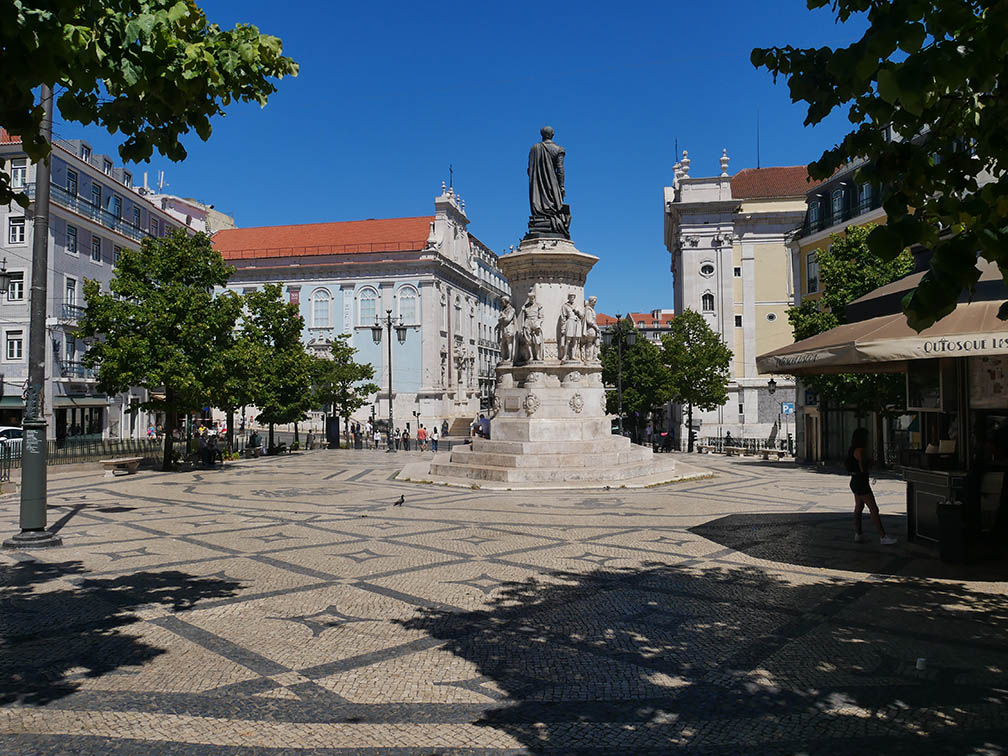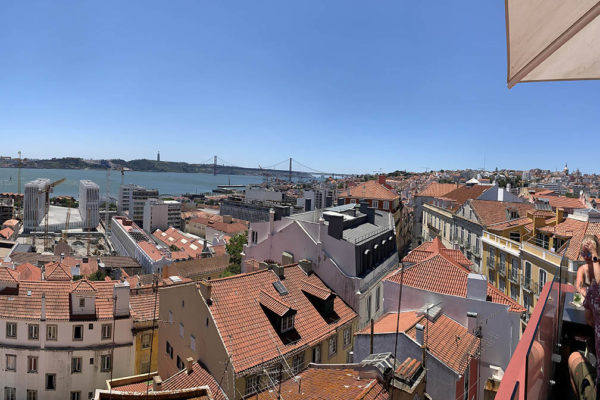Lisbon is a pleasant city, its squares are a perfect example of it, where it is good to enjoy it. From the very large to the most intimate, Lisbon has a wide variety of paved squares.
Commerce Square (praça do comércio)
The Plaza del Comercio is the largest square in Lisbon. This square was home to the Royal Palace for four centuries, hence the name it is still known by today. Terreiro do Paço (palace square). The square overlooks the Tagus River where in the past boats used to arrive directly at the Royal Palace. Before the earthquake and its destruction the palace closed the square. Now in the center of the square is the statue of King Joseh I of Portugal. The square is the most famous square in Lisbon, with its triumphal arch and great restaurants in the arcaded buildings all around. Emblematic place located in the center of the city.

Piazza Dom Pedro IV or Piazza Rossio
Located in the lower part (Baixa) of the old town, it faces the Rossio station and the National Theatre. Rossio is the historical name of the Praça de Dom Pedro IV. A place that witnessed many historical events such as the Carnation Revolution, today Rossio Square is still the place for political events such as demonstrations. Between Bairro Alto and Alfama, next to Martim Moniz Square and the Plaza del Comercio, Rossio Square is the central place of the city.

Largo do Carmo
Charming square with its fountain in the centre, in a classical and baroque style inspired by European romanticism, surrounded by jacarandas (a tree with blue purple flowers from Brazil). The square is in front of the Carmelite convent (see article on the museums).

Restauradores Square (praça dos Restauradores)
La praça dos Restauradores is located at the beginning of Avenida de la Libertadores. The Avenida da Lisberdade is nicknamed the Portuguese Champ Elysees because it is the 6th most expensive street in Europe with its wide promenades and luxury boutiques. This square owes its name to the men who, in 1640, revolted against the Spanish domination and proclaimed the independence of Portugal. Hear place of the Portuguese monarchy's restaurateurs and not place of restaurants even though many restaurants are located nearby such as the pedestrian street das Portas de Santo Antão.

Marquis de Pombal Square (praça do Marquês de Pombal)
At the end of Avenida de la Libertadora is the Plaza del Marquis de Pombal and the Eduardo VII Park. The square pays homage to Sebastião José de Carvalho e Melo, Marquis of Pombal, an important man in the history of portugal. This square with its monumental statue of the Marquis of Pombal serves as a large roundabout. Naturally higher than the rest of the city it gives with the park a very beautiful perspective.

Luís de Camões Square
The square is located in the liveliest area of Lisbon between Bairro Alto and the Chiado district. The square pays homage to the Portuguese poet Luís Vaz de Camões with his statue erected in 1856. « I'm still holding the sword in one hand and the feather in the other. » quote from the poem The Lusiades.

Town Hall Square (Praça do Municipio)
Beautiful cobblestone square with its twisted column pillory. The pillory was a symbol of justice and power, nowadays decorative this square represents well the Portuguese architecture and aesthetics of the Manuelan period (Portuguese late Gothic).

Flower square (praça das flores)
One of the peculiarities of Lisbon are the squares, squares and gardens. Here the praça des flores, and as often in Lisbon, on the square, there is a kiosk terrace to sip a sumo (juice) or other drink in the shade of the trees.

Fig Tree Square (praça da figueira)
Formerly the most important covered market in the city, today the equestrian statue of King Dom João I is enthroned. The square is popular with taxis, Tuktuk and skateboarders.



